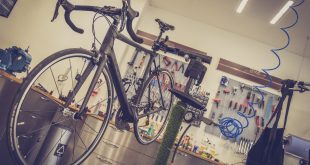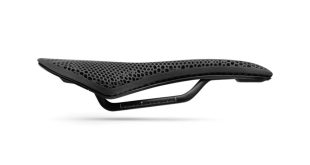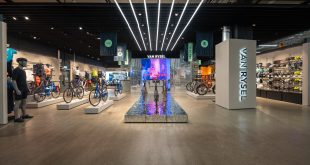On May 30th 1899 Wilbur Wright wrote to the Smithsonian Institution, asking for papers on man’s attempt to fly. He paid for the papers from his and his brother’s bicycle business. The accounts for the Wright Cycle Co. includes an 1899 entry of $5.50 "for books on flying."
"I am an enthusiast but not a crank in the sense that I have some pet theories as to the proper construction of a flying machine," he wrote to the Smithsonian, revealing he was "about to begin a systematic study of the subject in preparation for practical work to which I expect to devote what time I can spare from my regular business."
He and his brother would take turns to man their bicycle store as they tested first a kite prototype and then larger scale gliders in 1900, 1901 and 1902. Their first powered aeroplane in 1903 used bicycle chains and sprockets to link the propellors. Their aeroplane frames were made up of bicycle-type double-triangles. Wilbur’s visionary ‘wing warping’ technique of controlling an aircraft’s pitch, roll and yaw was developed after twisting an empty bicycle tube box with the ends removed.
By 1905, the brothers had achieved their goal of constructing a practical flying machine capable of remaining in the air for extended periods of time and operating under the full control of the pilot.
The earlier, smaller machines had been built and tested in the Wright’s bicycle store, in full view of customers.
In a later patent infringement case, the Wright brothers had to recall these early experiements to prove their patents.
Orville remembered spending long hours at the bicycle shop, waiting on customers, performing repairs, and constructing his kite.
"I was not able to be present when the structure was flown as a kite, but I operated the machine in our store before it was taken out to be flown," Orville told the court.
Bike buff boffins
The brothers were cycling enthusiasts. In 1892, Orville bought a new Columbia safety bicycle for $160. In the same year, Wilbur purchased a used Eagle safety bicycle for $80. Orville entered bicycle races put on by the YMCA Wheelmen. Wilbur liked to ride more slowly, taking in the passing scenery and, importantly, watching birds fly.
It’s therefore entirely possible that powered flight was conceived from the saddle.
The Wrights designed and built their Van Cleve and St. Clair custom bikes, starting in 1896. Their top-end bikes were priced around $100, which would be worth $2150 today, although they also had $30 models.
Originally small-town publishers and jobbing printers, the Wrights were inspired by their new found passion for bicycles to open a a bicycle sales and repair shop called the Wright Cycle Exchange at 1005 West Third Street in Dayton, Ohio in 1892.
As their business grew, the Wright brothers moved their bicycle shop six times and changed the name to the Wright Cycle Co. in 1894.
In April 1896, the Wrights introduced their first in-house bike, the Van Cleve. Catharine Benham Van Cleve Thompson, the Wright brother’s great, great grandmother, had been among Dayton’s first settlers. Later in the year, the Wrights introduced a second, less expensive model called the St. Clair. Again, the name was drawn from local history; Arthur St. Clair had been the first president of the Northwest Territory, which later became Ohio, Indiana, and Illinois.
The St. Clair was built up from parts that were available from sources such as the Davis Sewing Machine Company of Dayton, Ohio, which later became the Huffy Corporation.
Cycle innovators
The Wright brothers introduced two innovations on their bicycles. The Van Cleve came with a special "self-oiling hub" and, in 1900, the Wright’s announced a "bicycle pedal that can’t come unscrewed."
Wilbur and Orville used right-hand threads on one pedal and left-hand threads on the other so the pedalling action tended to tighten both pedals. Up until then most pedals had right-hand threads, leading to pedal drop-offs.
Their bicycle business was profitable for many years. In 1897, their best year, they made $3000 between them at a time when the average American worker was doing well to make $500 per year. The profits funded their aviation experiments.
By the turn of the century, however, the US market was flooded with $10 mass-produced bicycles and the manufacturing side to Wright Cycle Co. became less and less profitable.
The Wright’s stopped producing own-label bikes in 1904. The bike store continued to sell branded bikes and P&A but was converted to a machine shop in 1909 when the Wright Company, an aircraft manufacturing business, started producing bicycle-inspired parts for aeroplane engines.
1903-2003
In 1910, the Wright’s sold all their remaining bicycle parts and the rights to the Van Cleve name to W.F. Meyers, a bicycle salesman, repairman, and machinist. Meyers continued to sell Van Cleve bicycles until 1939.
Fast forward to 2003. Dayton bike shop owner Gary Boulanger did a name search on the Wright’s bicycle brands and found out the names had been allowed to lapse. Boulanger, who has produced copywriting for Trek, Schwinn, GT, Mongoose, and Huffy; managed a professional race team; and designed bicycle models for various companies, had a lightbulb-above-head moment. Re-launch the brands and spec the bikes with modern, top-end components, just as the Wright brothers did in the late 1890s.
The bikes are made by Co-Motion in Eugene, Oregon. The Van Cleve road bike is made from either Reynolds 853 or Easton 7005 Ultralite and is specced with Campagnolo Record gears, Chris King headset, and Campagnolo Record carbon seat post. The MTB has Shimano Dura-Ace gears. Boulanger’s Wright-inspired bikes start at $3185.
The Wright Van Cleve was made in 1896 and sold for about $100. Nearly 300 were sold by 1900.
Bells are not necessary…
The Van Cleve was first advertised in Snap Shots, a weekly Dayton newspaper printed and published by the industrious Wright brothers. The last ever edition of the publication carried this self-promotion:
"For a number of months Wright Cycle Co. have been making preparations to manufacture bicycles. After more delay than we expected, we are at last ready to announce that we will have several samples out in a week or ten days and will be ready to fill orders before the middle of next month. The WRIGHT SPECIAL will contain nothing but high grade material throughout, although we shall put it on the market at the exceedingly low price of $60…and we will guarantee it in the most unqualified manner."
And in an earlier editorial in Snap Shots, one of the Wright brothers showed his contempt for an issue that will tickle British bike shop owners because of the recent attempts by the Department of Transport to get bells and lights fitted to bikes at the point of sale:
"The Board of City Affairs will find that it is monkeying with a buzz saw, if it does not look out. The bicycle riders of this city are too numerous to be tramped on with impunity. Bells and lanterns are the biggest frauds ever invented…"
FURTHER INFO:
http://www.wright-brothers.org/…/wright_bicycles.htm
http://www.thehenryford.org/…/default.asp
http://www.centennialofflight.gov/index.cfm
http://www.nasm.si.edu/…/wright03.htm
PIX
Top: The Wright Flyer’s first flight in 1903. The person who took the photograph, or at least pressed the shutter under instruction, was Charles Taylor, the Wright Cycle Co’s bicycle mechanic, who also had a hand in the production of the twelve horsepower petrol engine that powered the Flyer.
Above, top: This Van Cleve bike has been modified to conduct aeronautical experiments
Above, middle: The Gansaari cycles Van Cleve
Base: All three careers of the Wright’s were conducted simultaneously in the original "Cycle Shop" building at 1127 West Third Street in Dayton, Ohio. Bicycles were serviced and manufactured, their printing business was located on the second floor and early gliders and aircraft were built in the shop at the rear of the building. This replica of the building is at Carillon Historical Park in Dayton. (Credit: Carillon
Historical Park.) The original Wright Cycle Shop was moved from its original site
to the Henry Ford Museum & Greenfield in Dearborn, Michigan by Henry Ford in 1937-38.
 BikeBiz Bicycle and cycling retail news
BikeBiz Bicycle and cycling retail news



